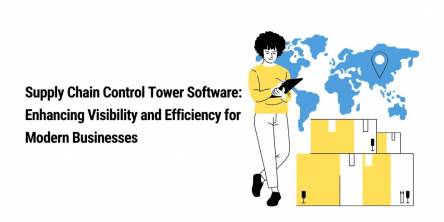Revolutionizing Your Online Business with Effective Returns Management

In today's booming world of competitive e-commerce, providing seamless customer experiences is paramount. One often overlooked yet crucial aspect of this experience is effective returns management. With online shopping continuing to soar, businesses must embrace the strategic imperative of optimizing their returns processes to foster customer loyalty and drive long-term success.
The Strategic Imperative of Returns Management
Customer satisfaction and brand loyalty are inextricably linked to the ease of the returns process. A staggering 96% of consumers are willing to buy again from a seller after a smooth return experience. In contrast, a complex or frustrating return journey can quickly destroy customer trust. It can also tarnish the brand's reputation.
Handling returns well is no longer solely about saving money. This is a strategic advantage that can revolutionize your online business. Companies that prioritize easy returns are poised to enjoy higher customer satisfaction, increased brand advocacy, and ultimately, sustainable growth. Integrating returns management into your customer experience software and platform can provide a seamless end-to-end experience for your customers.
Analyzing the Cost of Returns to Online Businesses
The benefits of optimized returns management are clear. However, we cannot ignore the financial costs of inefficient processes. Online returns cost UK retailers a staggering billions annually, with one in three online purchases being returned.
These alarming figures highlight the urgent need for businesses to minimize return rates and associated costs. Factors contributing to high returns include:
-
Inaccurate product descriptions or images
-
Sizing issues for apparel and footwear
-
Poor quality control measures
-
Inefficient reverse logistics processes
Dealing with these pain points requires targeted strategies. Using e-commerce inventory management solutions can reduce the cost of returns. They can also improve efficiency and profits.
Designing a User-Friendly Returns Process
A transparent, simple, and flexible returns policy is the cornerstone of a positive customer experience. Clear return windows, fees, and procedures build consumer confidence. They also foster trust and loyalty. To streamline your e-commerce returns process it's essential to prioritizeclear communication, hassle-free initiation, flexible options, and real-time tracking.
Key components of a user-friendly returns process include:
-
Clear communication: Use detailed product descriptions, sizing guides, and customer reviews to set accurate expectations before purchase.
-
Hassle-free initiation: Provide multiple channels (e.g., online portals, mobile apps) for customers to initiate returns seamlessly.
-
Flexible options: Offer a variety of return methods (e.g., prepaid shipping labels, and drop-off locations) to accommodate diverse customer preferences.
-
Real-time tracking: Enable customers to monitor the status of their returns, promoting transparency and peace of mind.
Using technology solutions can help. These solutions include delivery management and e-commerce software. They can further streamline the returns process. It will help both customers and businesses. For instance, returns software can optimize inventory. It can also cut processing times and provide insights for improvement.
Leveraging Returns Data for Business Insights
Returns can be costly but they also provide valuable data. Savvy businesses can use the data to drive growth and innovation. Returns data offers a unique window into customer preferences, pain points, and behavior patterns.
By analyzing returns data, businesses can:
-
Identify product quality issues: High return rates for specific products may indicate manufacturing defects or misleading descriptions, prompting corrective action.
-
Refine sizing and fit: Apparel and footwear companies can optimize sizing guides and consider introducing advanced sizing technologies like virtual try-on solutions.
-
Enhance product offerings: Insights into frequently returned items can inform product development strategies, aligning offerings with evolving customer needs and trends.
Many businesses have used returns data to pivot their product lines. This has led to lower return rates, happier customers, and higher sales. This data can be precious for B2B e-commerce software and platforms.
Sustainable Returns Management Practices
In times of high environmental concern, businesses must put sustainability first in their returns strategies. Returns have an environmental impact. They create waste from packaging and emissions from reverse logistics. This is a worry for consumers and regulators.
To address this challenge, businesses should consider the following eco-friendly practices:
-
Implementing reusable packaging: Explore options such as durable shipping containers or biodegradable materials that reduce waste and promote circularity.
-
Optimizing reverse logistics: Streamline return routes and consolidate shipments to minimize transportation emissions and fuel consumption.
-
Promoting product repair and refurbishment: Instead of discarding returned items, explore opportunities for repair, refurbishment, or resale through dedicated channels.
By adding sustainability to their returns processes, businesses can cut their environmental footprint. They can also appeal to the growing segment of eco-conscious consumers. These consumers value responsible business practices.
The Future of Returns Management
Returns management is rapidly evolving, driven by technological advancements and shifting consumer expectations. Businesses must stay ahead of the curve. They must do this to remain competitive and adapt to new trends.
One of the most promising developments is the addition of AI and machine learning to returns systems. These technologies can:
-
Predict return rates: By analyzing historical data and customer behavior patterns, AI algorithms can forecast return rates for specific products or demographics, enabling proactive inventory planning.
-
Optimize reverse logistics: Machine learning models can identify the most efficient return routes, reducing transportation costs and carbon emissions.
-
Automate processes: AI-powered chatbots and virtual assistants can streamline customer interactions, providing seamless support throughout the returns journey.
The e-commerce industry continues to grow. Businesses that embrace these new technologies will be well-positioned to offer unbeatable returns experiences. This will drive customer loyalty and long-term profits.
Comparison of Returns Management Strategies
To aid in visualizing and comparing different approaches to returns management, consider the following table:
|
Strategy |
Pros |
Cons |
|
Lenient Returns Policy |
Enhances customer confidence and satisfaction |
Higher return rates and processing costs |
|
Strict Returns Policy |
Reduces return rates and associated costs |
This may deter some customers and hinder loyalty |
|
Data-Driven Approach |
Enables continuous improvement and product optimization |
Requires robust data collection and analysis capabilities |
|
Sustainable Practices |
Aligns with eco-conscious consumer preferences and reduces environmental impact |
Upfront investment in sustainable packaging and logistics may be required |
|
AI/ML Integration |
Optimizes inventory planning, logistics, and customer support |
Significant upfront costs and potential data privacy concerns |
As shown, each strategy offers unique advantages and trade-offs. The optimal approach likely blends aspects of multiple strategies to align with your business's needs, resources, and goals.
Frequently Asked Questions (FAQs)
1. How can businesses reduce the cost associated with high return rates?
The cost of high return rates can be reduced by improving product descriptions and images. We can also do this by adopting better sizing technology. We can also do this by improving quality control and reverse logistics. Also, a user-friendly returns policy can increase customer satisfaction and loyalty. This might offset some of the costs associated with returns.
2. What are the key components of a user-friendly returns policy?
A user-friendly returns policy should prioritize transparency, simplicity, and flexibility. Clear communication about return windows, fees, and procedures instills confidence in customers. Offering multiple return methods and real-time tracking further enhances the customer experience.
3. Can effective returns management truly drive customer loyalty and repeat business?
Absolutely. Turning bad returns into good experiences can greatly boost customer loyalty. It can also encourage repeat purchases. Most consumers report being willing to buy again from a seller after a smooth return experience.
Conclusion
In the fast-paced world of e-commerce, returns management is no longer optional. It's a strategic must for businesses seeking long-term success. Companies can revolutionize their online operations by focusing on simple returns, using data, and embracing sustainability. This will build customer loyalty, cut costs, and keep them ahead of rivals.
The industry is evolving. Businesses must remain agile and adaptable. They need to use innovative technologies like AI and machine learning. They must use them to keep improving their returns management strategies. By doing so, they can turn returns from a mere cost center into a powerful driver of customer satisfaction, brand advocacy, and, ultimately, lasting growth.
Similar Articles
Simplify wealth management with advisor-directed trusts—separate roles, tailored investments, and expert oversight for efficient and flexible asset growth.
Let's face it — IT costs are eating your budget, and your CFO is giving you that look again. The one that says, "Find cuts or I will."
Sponsorship platforms are critical in scaling partnership programs in today's fast-paced digital world. Leveraging advanced sponsorship management software allows businesses to seamlessly manage their sponsorship activities, streamline processes, and optimize relationships with partners.
In today’s fast-paced world, businesses are constantly searching for ways to make their supply chains more efficient. Whether it’s managing stock levels, keeping customers happy, or reducing costs, there’s no room for delays or mistakes
Learn how Passive RFID tracking revolutionizes event management with seamless check-ins, real-time attendee insights, and enhanced security. Transform your next event!
The demands of the modern world dictate that a firm must provide its customers with excellent experiences. An essential aspect of this process, which is often randomly overlooked, however, remains how companies handle and organize queues
Discover how sustainable practices and technology in fleet management reduce costs, cut emissions, and drive eco-friendly operations for a greener future.
Boost your business success with CRM strategies. Learn how to enhance customer relationships, streamline operations, and drive performance with key insights.
Discover effective strategies to reduce employee turnover, improve retention, and build a motivated workforce by enhancing work culture, management, and compensation.









